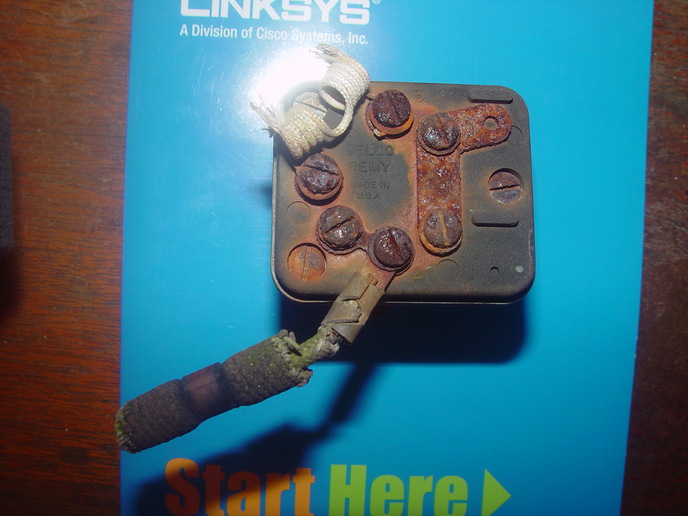Yep, I'm an elementary electrical(Pre-K) sort of guy; but here are the questions:
1. IH "Out to run", "In to stop" ignition switch has two wiring terminals. I see no markings identifying either terminal in any way. Thus, is it proper to wire from the ammeter to either ignition switch terminal, then all other wires to the other terminal?
2. I've seen a wiring diagram of a fuse in the wire between "BAT" on alternator to the ammeter. Is this necessary/helpful? If so, what type of fuse/holder?
3. Alternator #1 spade switch wire to ignition.
Wiring options appear to include somewhere along the length of the wire:
A filament style marker lamp bulb, or
A 15 ohm resistor, or
A 3 amp 50 volt PIV diode
Of course I could be confused with the above, but my question remains......
What is the purpose of something in this stretch of wire?
4. And, while I'm at it... how do I properly wire the original Delco Remey light switch (photo above)on the Farmall?
Term 1...
Term 2...
Term 3... (Is the #3 post on the L shaped piece of metal with 2 screws in it including the screw for #1 post?)

1. IH "Out to run", "In to stop" ignition switch has two wiring terminals. I see no markings identifying either terminal in any way. Thus, is it proper to wire from the ammeter to either ignition switch terminal, then all other wires to the other terminal?
2. I've seen a wiring diagram of a fuse in the wire between "BAT" on alternator to the ammeter. Is this necessary/helpful? If so, what type of fuse/holder?
3. Alternator #1 spade switch wire to ignition.
Wiring options appear to include somewhere along the length of the wire:
A filament style marker lamp bulb, or
A 15 ohm resistor, or
A 3 amp 50 volt PIV diode
Of course I could be confused with the above, but my question remains......
What is the purpose of something in this stretch of wire?
4. And, while I'm at it... how do I properly wire the original Delco Remey light switch (photo above)on the Farmall?
Term 1...
Term 2...
Term 3... (Is the #3 post on the L shaped piece of metal with 2 screws in it including the screw for #1 post?)


